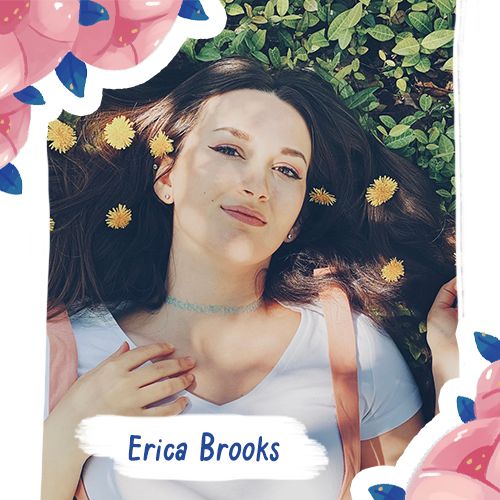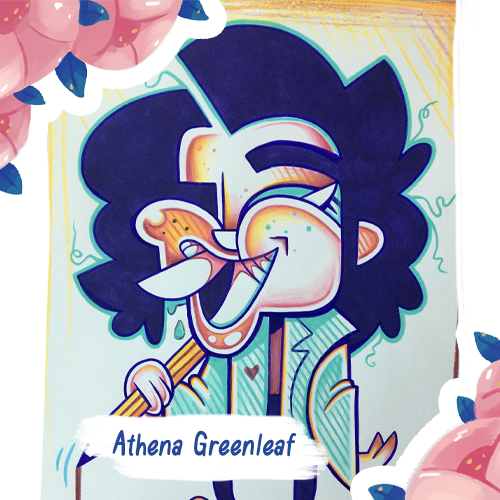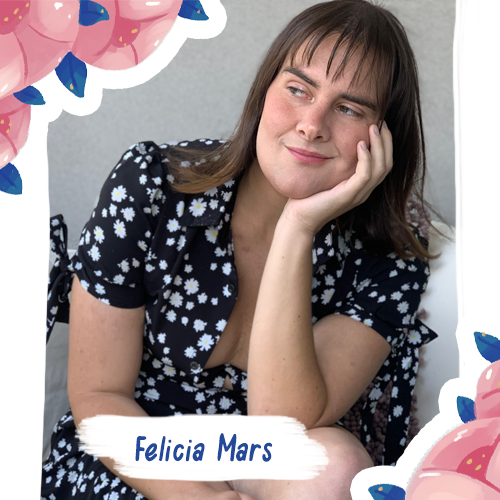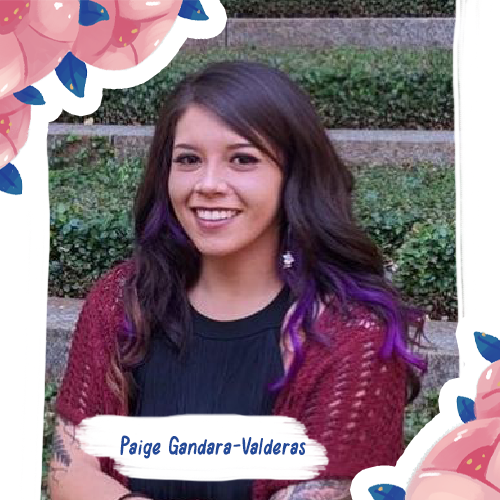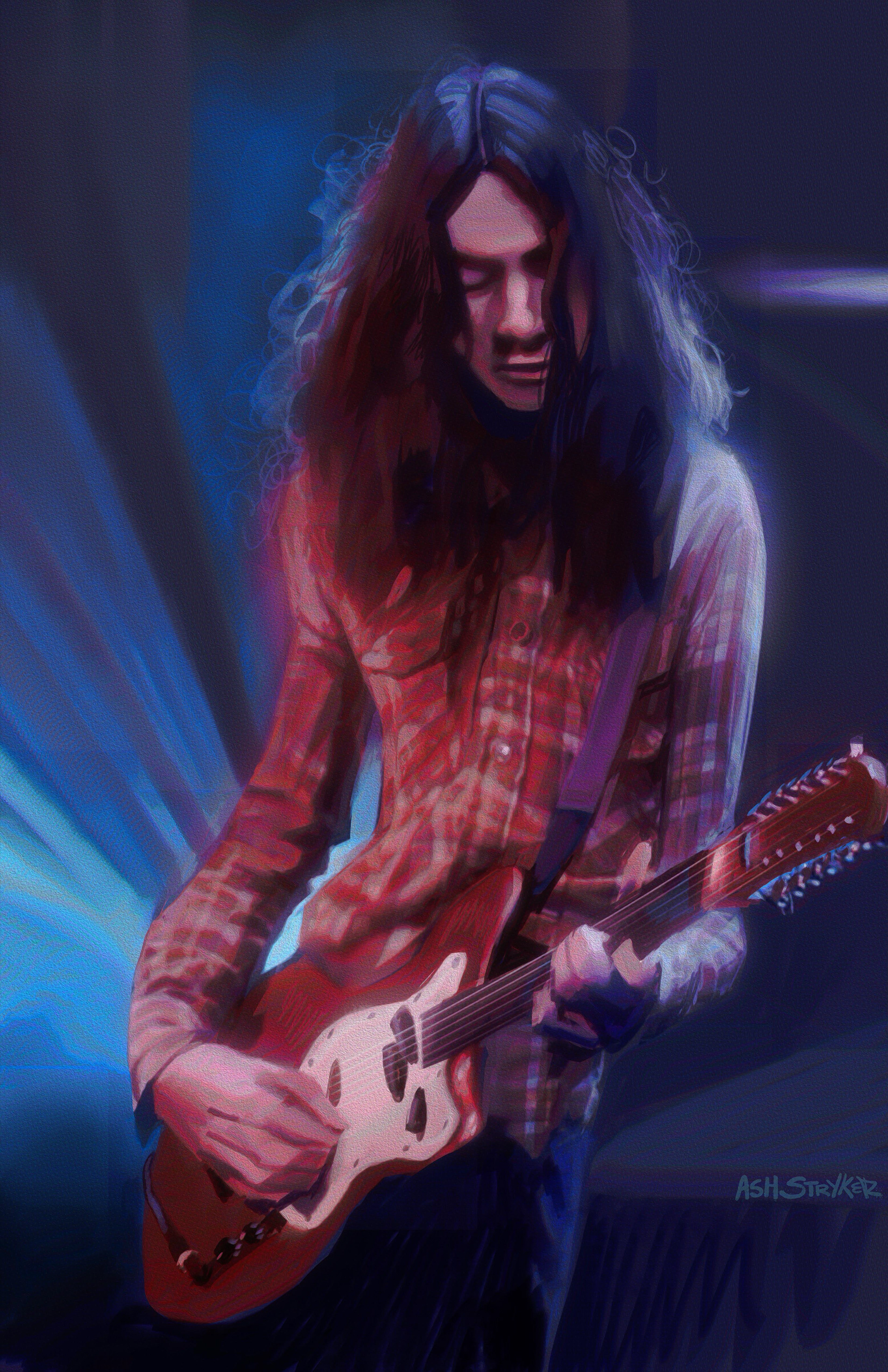
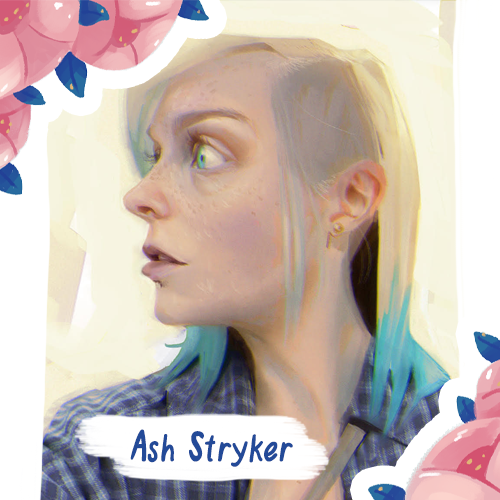
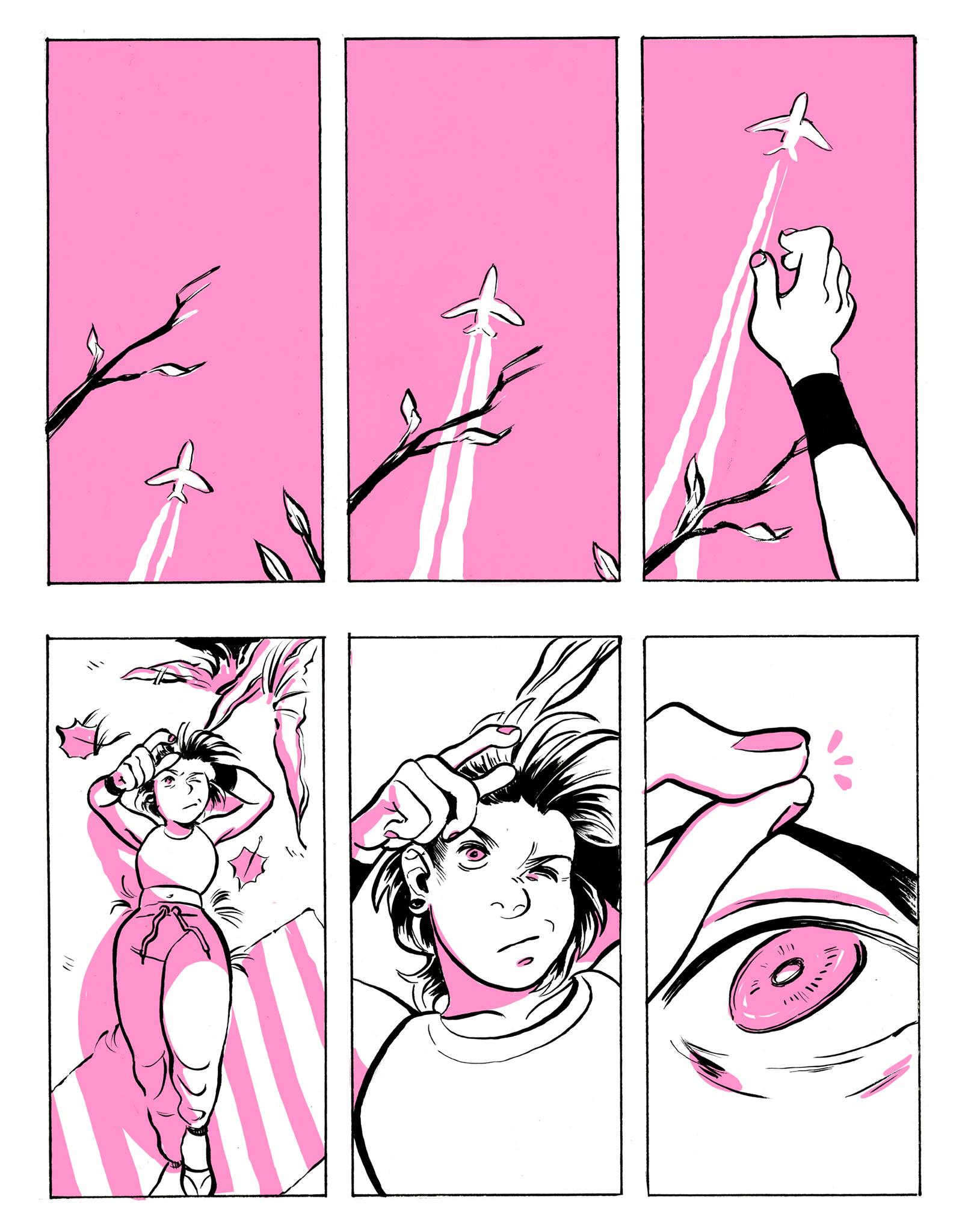
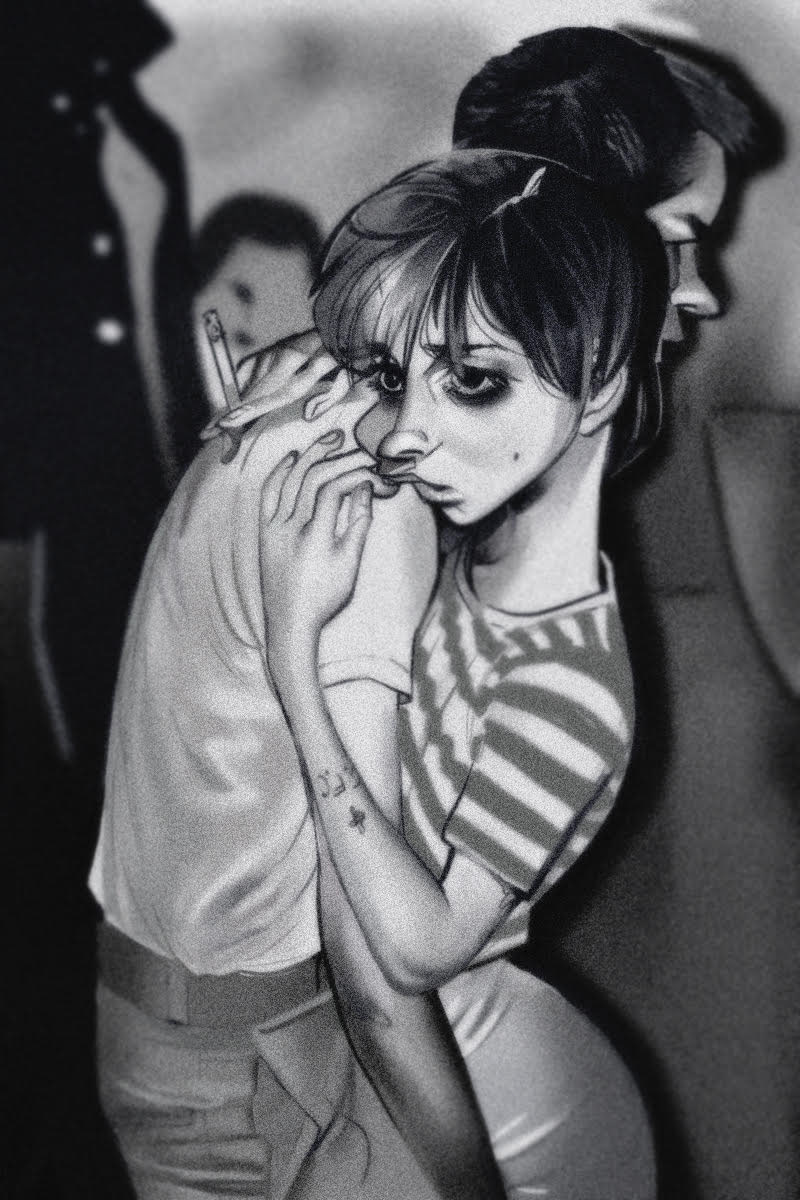
Q: Where did you get your start, and how long have you been a caricature artist?
A: I started doing caricature in 2018. Tom Richmond, unbeknownst to me, was the artist running caricature operations at the Mall of America and a theme park called Valleyfair. I was pursuing my BFA in Comic Art at the Minneapolis College of Art and Design, and our department had a communal studio space for students to work. I was at the tail end of my Sophomore year when I saw a flyer up in our studio asking for artists to work the summer at Valleyfair doing caricatures. I had always loved caricatures growing up, but only applied because it fulfilled internship credits for my degree. My first summer out there, I fell in love with the craft, the artists, and the rest was history.
A: I started doing caricature in 2018. Tom Richmond, unbeknownst to me, was the artist running caricature operations at the Mall of America and a theme park called Valleyfair. I was pursuing my BFA in Comic Art at the Minneapolis College of Art and Design, and our department had a communal studio space for students to work. I was at the tail end of my Sophomore year when I saw a flyer up in our studio asking for artists to work the summer at Valleyfair doing caricatures. I had always loved caricatures growing up, but only applied because it fulfilled internship credits for my degree. My first summer out there, I fell in love with the craft, the artists, and the rest was history.
Q: Where are you currently working?
A: I am still in Minnesota but started travelling for work this year. I have had the pleasure of working local and not-so-local fairs with some of the most talented people in the U.S. My primary source of income is fairs and gig work. I'm aiming to start up my own business soon, but that's a few years from fruition.
A: I am still in Minnesota but started travelling for work this year. I have had the pleasure of working local and not-so-local fairs with some of the most talented people in the U.S. My primary source of income is fairs and gig work. I'm aiming to start up my own business soon, but that's a few years from fruition.
Q: What kind of gigs are you doing, if any?
A: Mostly weddings and corporate events. I've done a few remote gigs and hybrid gigs where I work digitally in-person.
A: Mostly weddings and corporate events. I've done a few remote gigs and hybrid gigs where I work digitally in-person.
Q: COVID has had a huge impact on our industry. How has it impacted you personally, as a professional caricature artist?
A: I personally feel COVID has not dampened my lifestyle or work to the degree it has others. For that, I am thankful, and to those who powered through such a trying year, you have my utmost respect and support. I was still pursuing my degree, on my final semester, when lockdown hit. So, I spent much of 2020 finishing my degree and drawing from home (thanks, dad!) I truly wouldn't give up that freedom for anything, to be able to sit at my desk for hours every day just drawing to draw, knowing there were no deadlines or obligations awaiting me. And although I felt empowered through a year of diligent practice, by the end of 2020, I had some work opportunities I couldn't pass up. All in all, I felt it was an easy transition. That's my story, however, and I know it wasn't so easy for everyone.
A: I personally feel COVID has not dampened my lifestyle or work to the degree it has others. For that, I am thankful, and to those who powered through such a trying year, you have my utmost respect and support. I was still pursuing my degree, on my final semester, when lockdown hit. So, I spent much of 2020 finishing my degree and drawing from home (thanks, dad!) I truly wouldn't give up that freedom for anything, to be able to sit at my desk for hours every day just drawing to draw, knowing there were no deadlines or obligations awaiting me. And although I felt empowered through a year of diligent practice, by the end of 2020, I had some work opportunities I couldn't pass up. All in all, I felt it was an easy transition. That's my story, however, and I know it wasn't so easy for everyone.
Q: What are some of the caricature skills that you continue to use in your studio work?
A: It's difficult to pin this one down, because all of my analogous creative practices constantly influence one another, and in ways I don't always notice. I find I've sped up my studio work (unintentionally) because it's been hard-wired into me. Every step of the process is like another move in an elaborate dance. I work fast and loose, tighten up in some parts, and go back to that looseness again. It reminds me of mindful breathing. The ebb and flow are in everything I make. Caricature has influenced how I interpret form and visage, as well. I no longer see faces as a series of proportions I need to accurately recreate, and instead a challenge in condensing personality, energy, and identity into color and form. I could talk about this for hours; it really jazzes me up.
A: It's difficult to pin this one down, because all of my analogous creative practices constantly influence one another, and in ways I don't always notice. I find I've sped up my studio work (unintentionally) because it's been hard-wired into me. Every step of the process is like another move in an elaborate dance. I work fast and loose, tighten up in some parts, and go back to that looseness again. It reminds me of mindful breathing. The ebb and flow are in everything I make. Caricature has influenced how I interpret form and visage, as well. I no longer see faces as a series of proportions I need to accurately recreate, and instead a challenge in condensing personality, energy, and identity into color and form. I could talk about this for hours; it really jazzes me up.
Q: Are there things that you get from your personal work that retail caricature can’t provide? Do you like having the freedom to explore other topics and themes, for example?
A: As much as I love retail caricature, I think I'd lose my mind if I didn't have a more personal outlet to develop my art and voice. Studio work is sublime for that reason. I get to set the terms of my work, and either work within them or start pushing boundaries. It's a practice reminiscent of art school; you have parameters established week-to-week, but you get to explore yourself within those parameters. I constantly try new techniques and media, simply because it makes me happy. Art makes me happy.
A: As much as I love retail caricature, I think I'd lose my mind if I didn't have a more personal outlet to develop my art and voice. Studio work is sublime for that reason. I get to set the terms of my work, and either work within them or start pushing boundaries. It's a practice reminiscent of art school; you have parameters established week-to-week, but you get to explore yourself within those parameters. I constantly try new techniques and media, simply because it makes me happy. Art makes me happy.
Q: I think one can easily tell from your work that you're heavily influenced by comics. Tell us more about your relationship with comics. What kind of stories do you like to convey through comics? What is it about the medium that you enjoy, or that you find challenging?
A: You know how when you're at a fair and people ask, "How long have you been drawing?" and the only answer is "Since forever"? This is true for comics in my life. I drew comics as a kid, read comics growing up, and sustained this interest for no reason other than pure enjoyment. I applied to MCAD in high school, and during the application process, was asked to select a prospective major. I saw "Comic Art," and didn't really think about its application outside of passion. I just wanted to spend a couple years learning about, making, and consuming comics. So that's what I did! With my own work, I like quiet, self-referential stories. Everyday people with their everyday lives. I know many people are privy to fantasy and wish fulfillment, and that's a market that saved me quite often growing up, but I found I wasn't good at making fantastical universes. I liked minute character interactions, how people evolve over time, how they handle their relationships, and their ability to conquer strife. (Or, sometimes, succumb to it.) Comics are amazing because there's a niche for every story, every style, every voice. You don't need to be a bestseller, you just need to have the constitution to rigorously draw and write for months, years, to tell one story. I find that to be a marvelous feat of human ingenuity. This is another topic I could gush on for hours. I'd hate to bore you!
A: You know how when you're at a fair and people ask, "How long have you been drawing?" and the only answer is "Since forever"? This is true for comics in my life. I drew comics as a kid, read comics growing up, and sustained this interest for no reason other than pure enjoyment. I applied to MCAD in high school, and during the application process, was asked to select a prospective major. I saw "Comic Art," and didn't really think about its application outside of passion. I just wanted to spend a couple years learning about, making, and consuming comics. So that's what I did! With my own work, I like quiet, self-referential stories. Everyday people with their everyday lives. I know many people are privy to fantasy and wish fulfillment, and that's a market that saved me quite often growing up, but I found I wasn't good at making fantastical universes. I liked minute character interactions, how people evolve over time, how they handle their relationships, and their ability to conquer strife. (Or, sometimes, succumb to it.) Comics are amazing because there's a niche for every story, every style, every voice. You don't need to be a bestseller, you just need to have the constitution to rigorously draw and write for months, years, to tell one story. I find that to be a marvelous feat of human ingenuity. This is another topic I could gush on for hours. I'd hate to bore you!
Q: I love how your digital caricature style can incorporate print textures/effects, and often feels very cinematic at times. Your colors capture the mood and energy of your subjects so well! How did you develop this style and where do you draw inspiration from?
A: This means a lot to me, thank you. I hope this isn't a cop-out, but I read a lot of existentialist philosophy, and a recurring theme is the idea of self-realization. I see art through this lens. We are invisibly becoming everyday of our lives, and by pursuing virtue and passion, we become more robust individuals. Art is the same way. I saw natural inclinations in my process: the adoration of character design and energy, the tendency to prefer print and analog media (ironic, I know,) and an intense love for people. When I saw certain techniques arise through experimentation that I liked, such as the texture effects, I kept toying with them until they matured and became. I know this is very flowery language but it's the best I have to communicate it. I love art and caricature's ability to capture something more real than its referential counterpart. It's through passion and trial and error that this style arose. As for inspirations, they're not all artists (though, there are plenty of those, too.) I'm often inspired by moments in time, like a musician caught perfectly in a magenta haze on stage, or a quiet creek littered with orange sunrays, or a loved one's face obscured by a shadow's tenebrosity. Inspiration comes from everywhere, and that's the biggest piece of advice I could give my friends and peers: be inspired by moments, not just media. See the composition in everyday life. The beauty intrinsic to existence. It's literally everywhere, and it can be quite disarming.
A: This means a lot to me, thank you. I hope this isn't a cop-out, but I read a lot of existentialist philosophy, and a recurring theme is the idea of self-realization. I see art through this lens. We are invisibly becoming everyday of our lives, and by pursuing virtue and passion, we become more robust individuals. Art is the same way. I saw natural inclinations in my process: the adoration of character design and energy, the tendency to prefer print and analog media (ironic, I know,) and an intense love for people. When I saw certain techniques arise through experimentation that I liked, such as the texture effects, I kept toying with them until they matured and became. I know this is very flowery language but it's the best I have to communicate it. I love art and caricature's ability to capture something more real than its referential counterpart. It's through passion and trial and error that this style arose. As for inspirations, they're not all artists (though, there are plenty of those, too.) I'm often inspired by moments in time, like a musician caught perfectly in a magenta haze on stage, or a quiet creek littered with orange sunrays, or a loved one's face obscured by a shadow's tenebrosity. Inspiration comes from everywhere, and that's the biggest piece of advice I could give my friends and peers: be inspired by moments, not just media. See the composition in everyday life. The beauty intrinsic to existence. It's literally everywhere, and it can be quite disarming.
Q: What are your favorite tools for retail and digital caricature?
A: Retail is airbrush and Crayola markers. Digital is Photoshop, but when I do digital retail, I use Procreate.
A: Retail is airbrush and Crayola markers. Digital is Photoshop, but when I do digital retail, I use Procreate.
Q: What hobbies or passions do you have outside of caricature?
A: I'm a consumer, through-and-through. I love books, movies, poetry, music, essays, comics, art... It's all just ways I can communicate my own art better. If you wanna get me fired up, DM me about Richard Linklater or Jaime Hernandez. I'll talk your ear off.
A: I'm a consumer, through-and-through. I love books, movies, poetry, music, essays, comics, art... It's all just ways I can communicate my own art better. If you wanna get me fired up, DM me about Richard Linklater or Jaime Hernandez. I'll talk your ear off.
Q: Who are your favorite women artists in caricature or in related industries?
A: I'm so glad I have another opportunity to gush about Kelly O'Brien. When I started in 2018, she was one of the first artists I was turned onto. Her work inspires me on the daily, as does Mae Adao's and Kiko Yamada's. They have deliciously lively styles. When I show up to a gig or show, I'll often pull up their profiles just to steal all their secrets. Outside of caricature, I'm inspired by Eleanor Davis, who I think could be the best active cartoonist of our generation. Her storytelling is so human. I recommend you pick up a copy of her comic The Hard Tomorrow. It's salient now, and I think it'll be salient 100 years from now, too. In film, I adore Lynne Ramsay and Sofia Coppola. In writing, Ursula K. Le Guin and Maggie Nelson. In poetry, Maya Angelou and Sylvia Plath. In political writing, Michelle Alexander. Is there a character limit? I'm leaving so many people out.
A: I'm so glad I have another opportunity to gush about Kelly O'Brien. When I started in 2018, she was one of the first artists I was turned onto. Her work inspires me on the daily, as does Mae Adao's and Kiko Yamada's. They have deliciously lively styles. When I show up to a gig or show, I'll often pull up their profiles just to steal all their secrets. Outside of caricature, I'm inspired by Eleanor Davis, who I think could be the best active cartoonist of our generation. Her storytelling is so human. I recommend you pick up a copy of her comic The Hard Tomorrow. It's salient now, and I think it'll be salient 100 years from now, too. In film, I adore Lynne Ramsay and Sofia Coppola. In writing, Ursula K. Le Guin and Maggie Nelson. In poetry, Maya Angelou and Sylvia Plath. In political writing, Michelle Alexander. Is there a character limit? I'm leaving so many people out.
Q: Thanks again for participating in WIC's Artist Spotlight! Where can we follow your work?
A: Thank you for having me! It truly means so much to me. This community is equal parts inspiring and empowering, and I can't believe I've been welcomed so warmly by you all. It humbles me to my core. As for my work, my live portfolio is on my website http://ashstryker.com/ and the majority of my work and process can be found on my IG @AshStryker
A: Thank you for having me! It truly means so much to me. This community is equal parts inspiring and empowering, and I can't believe I've been welcomed so warmly by you all. It humbles me to my core. As for my work, my live portfolio is on my website http://ashstryker.com/ and the majority of my work and process can be found on my IG @AshStryker

